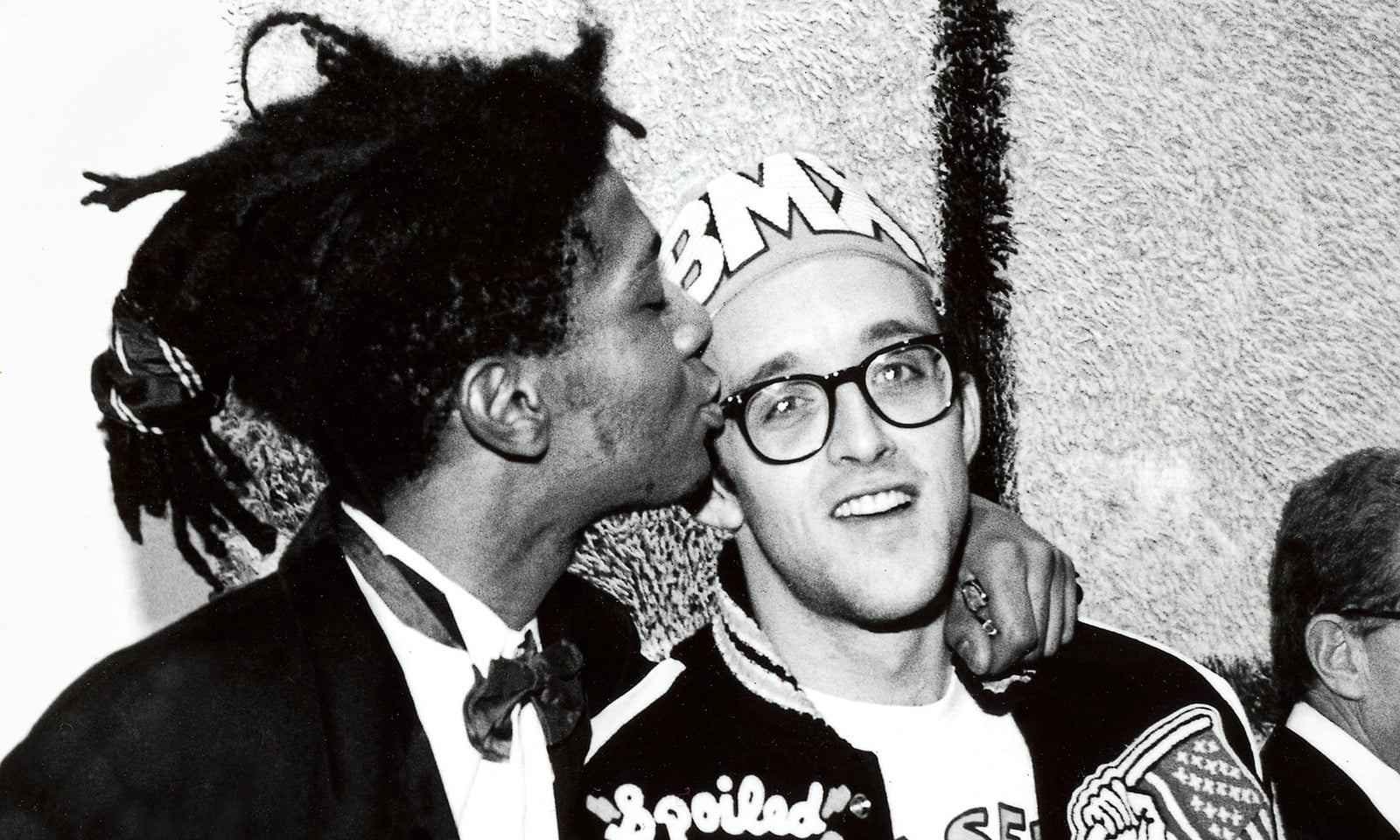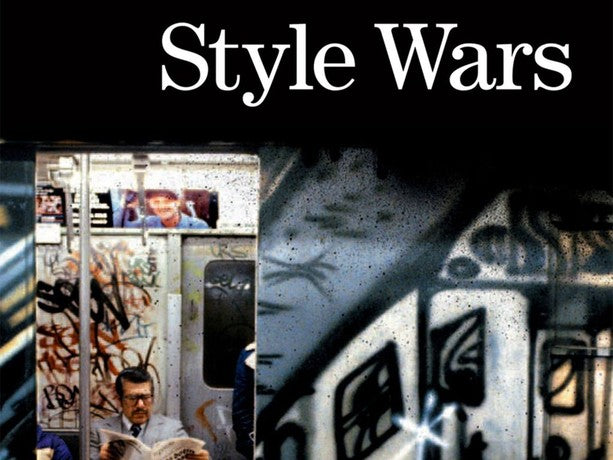As an ongoing series we have put together some articles focused on the birthplace of modern graffiti - New York City. Each of our graffiti history articles is focused on a time and place and examining different aspects that lead to the rise, popularity and historical interest in that place and time. Together our history of graffiti articles help weave the tapestry and history that makes up the many facets of Graffiti today.

Graffiti Crackdown in New York City
As the burgeoning graffiti scene finally exploded in the early 1980s, so, too, did citywide efforts to clean up the perceived blight stretching across New York City. Once sterile train cars, parks, and building walls were coated in layers of spray painted writing. City officials, fearing a downturn in subway ridership along with increased crime and drug use, responded aggressively. In order to remove the tagging, government and other non-profit groups turned their attention to cleaning campaigns – as well as some unique approaches to striking deals with the artists behind the tagging. Organizations like the Hub, a Bronx-based center, promised free art supplies and exhibition opportunities to young graffiti writers provided they abstain from tagging. According to a New York Times article, the number of graffiti arrests diminished from 2,400 in 1984 to just 300 by 1997.

Where did the artists go? Some found new outlets for their creative impulses, while others found success in the East Village’s rising gallery scene. These low frills galleries provided venues in which street artists could showcase their works to the curious public and wealthy collectors. Among the most successful street artists to make the jump from street to gallery were Jean-Michel Basquiat and Keith Haring, both of whom shot to fame in the early 80s before their lives were cut short.

A New Gallery Scene Emerges in the East Village
From the early to late 1980s, New York City’s East Village ascended to the position of hot spot for unknown or rising artistic talent. Street artists such as Jean-Michel Basquiat, Keith Haring, Jeff Koons, Jenny Holzer, Lady Pin, Lee Quinones, Futura 2000, and others carved out names for themselves in new gallery spaces run by artists for artists. As Gary Indiana, himself a fixture in that scene, wrote in an article for New York Magazine, “…the East Village was an ideal refuge for any artist born without a silver spoon.”

Pasti Astor and Bill Stelling opened FUN Gallery, while Peter Nagy founded Nature Morte. International With Monument and Cash/Newhouse also popped up as gallery spaces in small, converted storefronts – a far cry from the established and elite SoHo gallery spaces. Basquiat, Haring, and Kenny Scharf earned some of their first commercial exposure at the Fun Gallery, and Collaborative Projects Incorporated (Colab) facilitated The Times Square Show, a now legendary 1980 exhibition featuring work from over 100 street artists, to further establish the presence of these young artists. By showing their work at The Times Square Show, artists such as Basquiat cemented their reputations and caught the attention of SoHo galleries. For Basquiat, this move helped to launch a lucrative career that included collaborations with Andy Warhol and exhibitions across Europe.

Basquiat’s Visual Language Takes Shape
Jean-Michel Basquiat was one of the most successful of these young street artists turned highly sought after commodity. The son of a Puerto Rican mother and Haitian father, Basquiat spent his formative years in Brooklyn where frequent trips to the Brooklyn Art Museum with his mother helped to spur artistic interests. With fellow street artist and high school friend Al Diaz, the duo took to the streets to brand them with their tag, SAMO. Though the exact history of SAMO’s origin remains blurry, the tag is said to have emerged from conversations between the two artists in which the phrase “same old sh*t” eventually became shortened to SAMO. SAMO morphed into a character at one point, and soon became the stuff of pamphlets, stickers, and wall writings – a witty tag that spread to SoHo and the East Village like an ironic healing force. Basquiat’s wit, clever interplay between text and visuals, and homages to African American heroes earned him a distinctive place among street artists.

Aside from his early writing with spray paint, Basquiat turned to acrylics and oils sticks to make work on found objects. His style’s confident looseness visually mimics the improvisational sounds of jazz. He even honored the legendary jazz musicians Dizzy Gillespie and Charlie Parker through some of his best-known works. Color drip from one burst of paint to another, and bold slashes of color, fragments of text, and a visual quality reminiscent of African masks distinguish Basquiat’s work. Though Basquiat gained artistic acclaim in the East Village scene, gallerists from SoHo sought him out and his fame landed him on the cover of The New York Times Magazine. All of this was a brief whirlwind, however, as Basquiat’s drug dependency and personal demons ended his life before the age of 30.

Haring’s Radiant Images
Keith Haring also made a transition from street to gallery as part of the East Village scene. Haring grew up in Pennsylvania, and after giving up on a commercial art as a career possibility, he moved to New York City and joined the community of street artists there. He befriended Basquiat and other notable names, and turned to a visual style reminiscent of French artist Jean Dubuffet’s sculptural works in which a flat, even, continuous line creates bold, life-like forms. In Dubuffet’s mature work, there is no tonal range and the color palette is limited. Similarly, in Haring’s work, a fluid line does most of the talking. Many critics also have compared his work to that of Pop artists such as Roy Lictenstein or Andy Warhol, as well. In Haring’s best-known images, cartoonish and generalized figures gyrate against colorful backgrounds, inviting viewers to become part of the scene.

For Haring, the black backing paper for advertisements in subway tunnels became an easy canvas for his white chalk drawings. Though he staunchly believed that art needed to be public and that there should not be a distinction between high and low art, he, like Basquiat, made his mark first in the East Gallery scene. Club 57, an underground arts space in a church basement, hosted Haring and other young artists developing their visual vocabulary.

By 1980, Haring was showing in SoHo galleries and his universally appealing work was finding its way to magnets, bedspreads, t-shirts and other commercial items. Haring argued that the commodification of his work was actually positive since it made art more accessible to the average person. Also like Basquiat, Haring’s career was but a short flourish in the 1980s, as he passed away at the age of 32.

New York East Village Graffiti History In Closing
The East Village gallery scene represented a concentrated time of opportunity for young street artists in the early 1980s when New York City was working furiously to squash graffiti. Curious collectors could see the work of these artists in more familiar settings and even meet the artists behind the work. Some critics have suggested that the move to a more formalized gallery scene compromised the quality of work from these artists – or that the artists were selling out. Gary Indiana laments in New York Magazine, “The banal efforts of once-exciting artists received rote adulation from claques less concerned about quality.” The move away from illicit underground works may have softened the edge of street art, but the East Village scene humanized these artists for the public and gave the artists a new audience.






Leave a comment (all fields required)